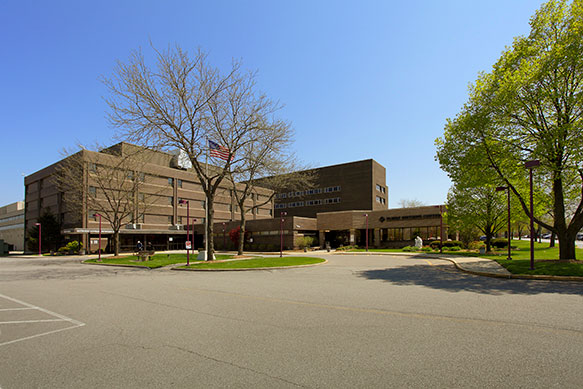
Pacemaker, ablation and WATCHMAN a winning combination for one Valparaiso man’s heart
“I couldn’t breathe and my chest hurt; it was awful,” says Billy Ray Pierce about how it felt when he suffered a heart attack. “Believe me, if you have one, you should know what is happening, but I didn’t.”
For years, the Valparaiso resident had been under extreme stress taking care of his wife who had suffered from heart disease herself. However, even after he had a bleeding gastric ulcer and was diagnosed with AFib, Pierce did nothing to change his lifestyle.
“I am not very active and don’t do too much, but life had become very stressful,” Pierce says. “I had been living a whole year with AFib and didn’t do anything about it. But, my heart attack changed all that. I got the works–a pacemaker, ablation for the AFib and after that, the WATCHMAN™ procedure.”
Pierce was treated at St. Mary Medical Center in Hobart by his wife’s electrophysiologist, Samer Ajam, MD, a Community Care Network physician on staff at the hospitals of Community Healthcare System.
“Dr. Ajam changed our lives; that’s why I feel so comfortable with him,” says Pierce. “After I got my pacemaker, I was able to drive again. I was happy to get my independence back.”
Community Healthcare System’s Structural Heart & Valve Center team is dedicated to providing patients with access to the most advanced treatments for structural heart and valve diseases including Watchman FLX for stroke prevention in atrial fibrillation, balloon valvuloplasty for both aortic and mitral valve stenosis, Mitraclip for mitral valve repair and transcatheter aortic valve replacement or TAVR. Since 2017, the program has grown into one of the leading structural heart centers in the Chicago and Northwest Indiana area, surpassing even academic medical centers in both volume and quality outcomes.
To treat Mr. Pierce’s heart and restore his quality of life, we used a combination of a pacemaker with catheter ablation for his AFib and then the WATCHMAN procedure, explains Ajam.
Catheter ablation is a minimally invasive procedure that prevents unwanted electrical currents traveling to the upper chambers of the heart. During a catheter ablation, small areas of heart tissue that are causing the irregular heartbeats are destroyed. The resulting lesions help to restore the heart’s regular rhythm.
Atrial fibrillation or AFib is an irregular heartbeat that causes poor blood flow in the upper two chambers of the heart. With AFib, blood is not completely pumped out, which can cause the remaining blood to pool or clot, leading to stroke, heart failure or other heart-related complications. Although not considered a life-threatening condition, those with AFib are five to seven times more likely to form blood clots and suffer a stroke. Once accurately diagnosed, AFib can often be treated with blood thinning medications such as warfarin or catheter ablation.
“After the ablation with my past history of stomach issues, Dr. Ajam didn’t want me to be on blood thinners long term,” Pierce says. “He told me that I was a good candidate for the WATCHMAN procedure.”
WATCHMAN is an FDA approved self-expanding device. When deployed, it aims to reduce the risk of stroke in patients, like Billy Ray, with non-valvular atrial fibrillation who are in need of an alternative to oral anticoagulation therapy.
“The WATCHMAN implant closes off an area of the heart called the left atrial appendage to keep harmful blood clots that may form from entering the bloodstream and potentially causing a stroke,” Ajam says. “By closing off the left atrial appendage, the risk of stroke is reduced, and over time, patients, including Billy Ray, may be able to stop taking warfarin.”
Physicians at the hospitals of Community Healthcare System are currently using WATCHMAN FLX, the redesigned version of the device which features a rounded head that better enables physicians to safely access and maneuver inside the left atrial appendage. The parachute tip can be retracted, repositioned then relaunched for more precise placement than with the previous device.
“It is important to understand that WATCHMAN FLX does not prevent AFib, but offers stroke risk reduction by closing off the appendage,” explains Ajam. “The FLX allows us to offer left atrial appendage closure to a wider variety of patients who would not have been successful with the other technology. Anyone who is struggling with blood thinners for their AFib and has a suitably shaped appendage, could be a candidate.”
“Whether we use ablations, blood thinners or the WATCHMAN FLX device, we have the tools and technology to find the right treatment for our patients to give them a better quality of life,” he says.
For more information about heart care at the hospitals of Community Healthcare System, visit COMHS.org/heart.


